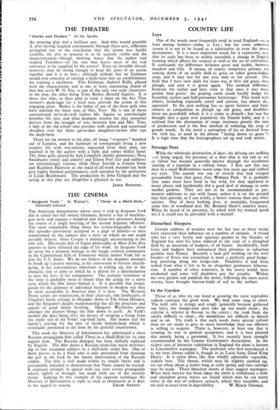In the Garden Those of us who try our hand
at growing the rarer vegetables seldom continue the good work. We find some snag or other. The kohl rabi is stringy and tough (generally because gathered too late); the mange-tout peas take up too mall Loom; the celeriac is inferior in flavour to the celery ; the cook finds the salsify difficult to clean ; the dandelions are difficult •to bleach and so on. The truth is that each needs more special culture than we are ready to give or more knowledge than our idleness is willing to acquire. There is, however, at least one that is winning its way to general acceptance, and it is best planted this month, being a perennial. It has recently been strongly recommended by the County Gentleman's Association. In the richest area of intensive cultivation in England the plant is known as Lincolnshire asparagus. The professor who first introduced it to my taste always called it, though in its Latin form, Good King Henry. It is twice blest, like that wholly admirable vegetable, seakale beet. The shoots, which may be slightly earthed up, are cut when about 4 inches long in early spring and two cuttings may be made. These bleached shoots at least suggest asparagus. When their harvest has been taken the earth is withdrawn a little and abundant green leaves are found which may be cut many times in the way of ordinary spinach, which they resemble, and are said to excel even in digestibility. W. BEACH THOMAS.






















 Previous page
Previous page